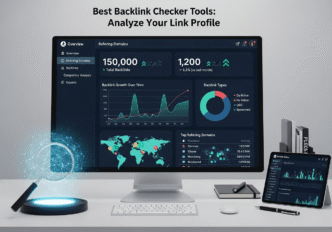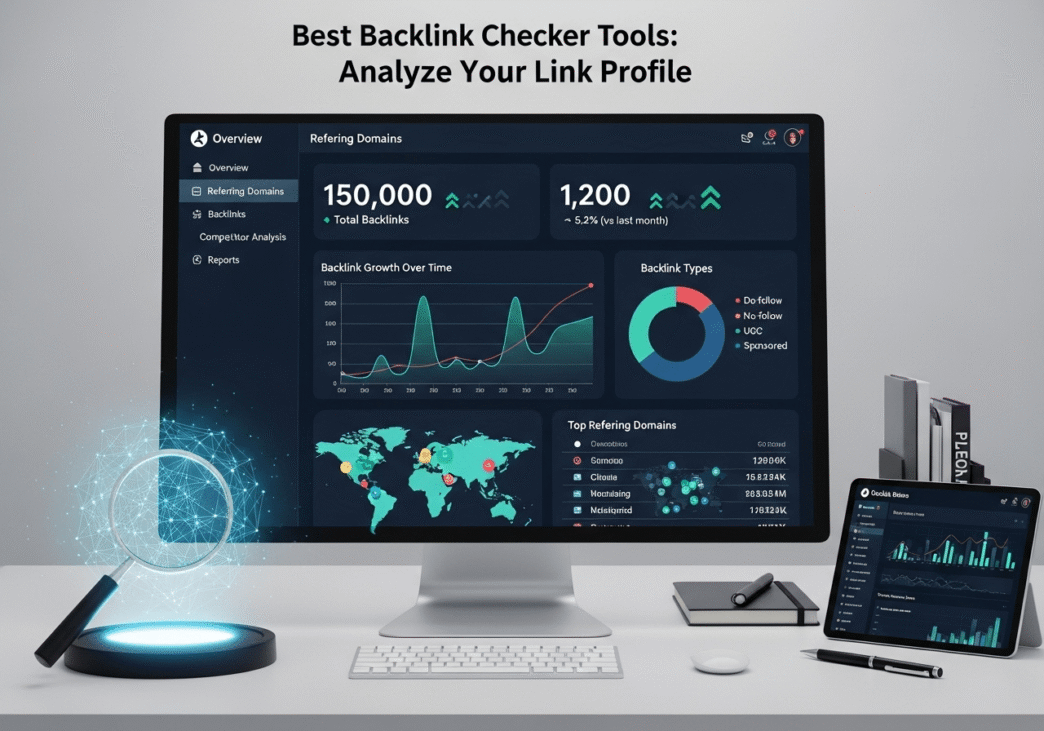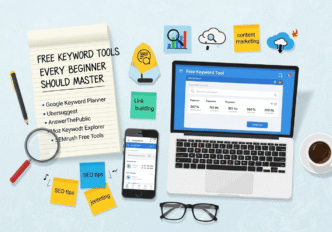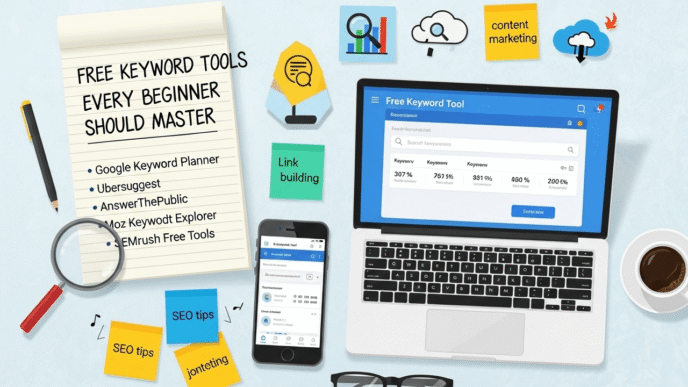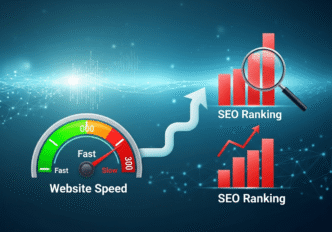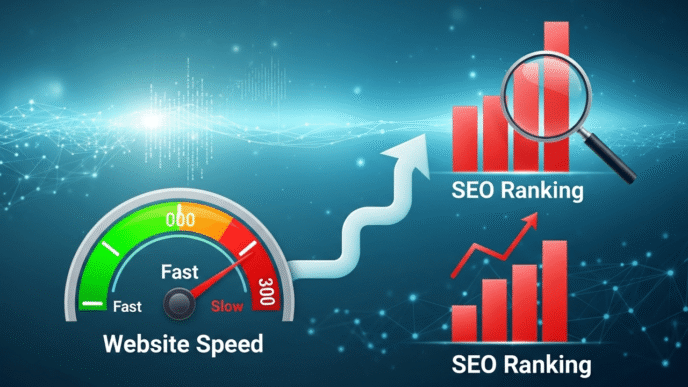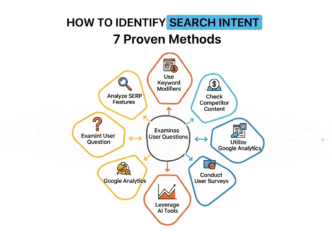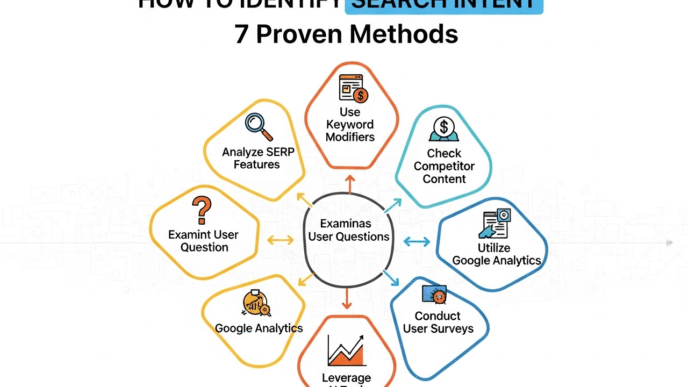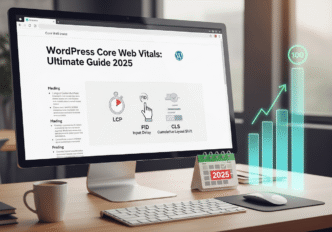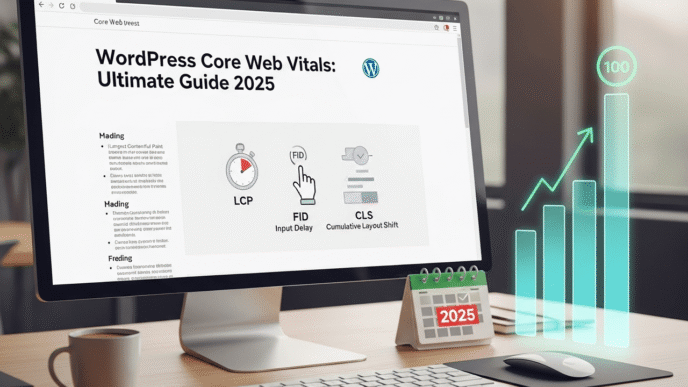Ever tried to count your backlinks manually? It’s like trying to count grains of sand on a beach while blindfolded – frustrating, time-consuming, and probably inaccurate!
You know backlinks are crucial for SEO success, but here’s the kicker: you can’t improve what you can’t measure. Without proper backlink checker tools, you’re essentially flying blind in the competitive world of search engine optimization.
Whether you’re wondering how many quality links you’ve earned, worried about toxic backlinks hurting your rankings, or curious about your competitors’ link-building secrets, the right tools make all the difference. Today, I’m breaking down the best link analysis tools that’ll transform your guesswork into data-driven decisions.
From free options that won’t break the bank to premium platforms that rival NASA’s data analysis capabilities, we’re covering everything you need to master backlink monitoring like a pro.
Table of Contents
Toggle
Why Do You Need Backlink Checker Tools in Your SEO Arsenal?
Think of backlink checker tools as your SEO detective kit. They reveal the hidden connections between websites, uncover your competitors’ strategies, and help you spot both opportunities and threats lurking in your link profile.
Without these tools, you’re like a chef trying to perfect a recipe without tasting the food. You might think you’re doing everything right, but you’ll never know for sure until it’s too late.
Link analysis tools provide critical insights that manual checking simply can’t match. They track thousands of backlinks across the web, monitor changes in real-time, and present data in digestible formats that actually make sense.
Understanding what backlinks are and why they matter sets the foundation, but analyzing them effectively requires the right technology.
What Makes the Best Free Backlink Checker Tools 2025 Stand Out?
Free backlink tools have come a long way from the basic link counters of yesteryear. Today’s free options pack serious analytical power without requiring a monthly subscription.
The best free tools offer essential features like basic link profile audit capabilities, competitor insights, and domain authority metrics. While they may have limitations compared to premium options, they’re perfect for small businesses and SEO beginners.
However, there’s always a catch with free tools. Most limit the number of queries per day, restrict historical data access, or watermark their reports. But hey, free is free, right?
Pro Tip: “Start with free tools to understand your basic link profile, then upgrade to premium options as your SEO strategy matures. Many professionals use a combination of both free and paid tools for comprehensive analysis.”
How to Check Backlinks of Any Website: A Complete Guide
Backlink tracking isn’t rocket science, but doing it effectively requires understanding both the tools and the metrics that matter. Most SEO analysis tools follow a similar process for analyzing link profiles.
First, you’ll enter the target URL or domain into the tool’s search interface. The tool then crawls its database of indexed backlinks and presents the results in various formats – from simple lists to detailed analytics dashboards.
The magic happens in the data interpretation. Quality link analysis tools don’t just show you links; they evaluate link authority, relevance, anchor text distribution, and potential spam signals.
Step-by-Step Backlink Analysis Process:
- Enter your domain or specific URL
- Wait for the tool to process and retrieve data
- Review total backlink count and referring domains
- Analyze link quality metrics and authority scores
- Examine anchor text distribution patterns
- Identify top linking domains and pages
- Check for toxic or spammy backlinks
- Export data for further analysis or reporting
What Are the Top Backlink Analysis Tools for SEO Professionals?
Professional SEO practitioners need robust backlink checker tools that can handle large-scale analysis, provide accurate data, and offer advanced filtering options. These aren’t your basic link counters – they’re comprehensive platforms designed for serious SEO work.
The cream of the crop includes industry giants like Ahrefs, SEMrush, and Moz, each offering unique strengths and specialized features. These platforms have invested millions in web crawling technology and maintain massive databases of backlink data.
Professional-grade features typically include historical data tracking, competitor comparison tools, link opportunity identification, and automated monitoring alerts. They’re worth the investment if you’re managing multiple websites or working with clients.
Free Tools to Monitor Backlinks Daily: Budget-Friendly Options
1. Google Search Console: The SEO Starter Pack
Google Search Console remains the most authoritative source for backlink data since it comes straight from Google’s own index. It’s completely free and provides insights directly from the search engine that matters most.
Key Features:
- Real backlink data from Google’s index
- Top linking sites and pages
- Most common anchor texts
- Historical link growth data
- Integration with other Google tools
Limitations:
- Only shows sample of total backlinks
- Limited competitor analysis capabilities
- Basic filtering and export options
- No link quality scoring
2. Ubersuggest: Neil Patel’s Gift to SEO
Ubersuggest offers a generous free tier that includes basic backlink monitoring capabilities alongside keyword research and site audit features.
Standout Features:
- Domain authority and page authority scores
- Top referring websites and pages
- Basic competitor backlink analysis
- Link growth trends over time
- Simple, user-friendly interface
Free Plan Limitations:
- 3 searches per day
- Limited historical data
- Basic export options
3. Backlink Watch: Simple and Effective
This straightforward tool focuses solely on link profile audit functionality without unnecessary bells and whistles.
What You Get:
- Complete list of detected backlinks
- Anchor text analysis
- PageRank and authority metrics
- Simple CSV export functionality
- Fast processing speed
Competitor Backlink Checker Tools Comparison: Premium Powerhouses
| Tool | Monthly Price | Database Size | Key Strengths | Best For |
|---|---|---|---|---|
| Ahrefs | $99-$999 | 22+ billion pages | Largest backlink database, excellent UI | Agencies & enterprises |
| SEMrush | $119-$449 | 20+ billion pages | All-in-one SEO platform | Marketing teams |
| Moz Pro | $99-$599 | 40+ billion links | Domain Authority metric, beginner-friendly | Small-medium businesses |
| Majestic | $49-$399 | 7+ billion pages | Trust Flow & Citation Flow | Link building specialists |
| LinkResearchTools | $299-$1,499 | Multiple sources | Advanced link risk analysis | Enterprise SEO |
Ahrefs Site Explorer: The Link Analysis Heavyweight
Ahrefs boasts the second-largest web crawler after Google, making it incredibly comprehensive for competitor backlink analysis. Their database updates every 15 minutes, ensuring you’re working with fresh data.
Standout Features:
- Most comprehensive backlink database
- Detailed referring domain analysis
- Advanced filtering and sorting options
- Historical backlink data going back years
- Content Explorer for finding link prospects
Case Study: A digital marketing agency used Ahrefs to analyze a client’s competitor and discovered 300+ uncontested link opportunities. By targeting these gaps, they increased the client’s referring domains by 150% in six months.
SEMrush Backlink Analytics: The Marketing Swiss Army Knife
SEMrush excels at providing context around backlinks with features that connect link data to broader marketing insights.
Unique Advantages:
- Integration with keyword and content marketing tools
- Backlink gap analysis between multiple competitors
- Brand monitoring and mention tracking
- Authority score based on machine learning
- White-label reporting for agencies
Moz Link Explorer: User-Friendly Authority Analysis
Moz pioneered many backlink metrics still used industry-wide, including their famous Domain Authority score.
Key Benefits:
- Spam Score for identifying risky links
- Link intersect tool for finding mutual opportunities
- Easy-to-understand interface for beginners
- Strong correlation with Google rankings
- Active community and educational resources
What Link Quality Assessment Features Should You Prioritize?
Link quality assessment separates amateur link builders from seasoned professionals. Not all backlinks are created equal, and understanding quality indicators helps you focus efforts on links that actually move the needle.
Top Quality Indicators to Monitor:
- Domain authority and page authority scores
- Relevance to your industry and content
- Traffic volume of the linking website
- Editorial context and natural placement
- Diversity of linking domains and IP addresses
Red Flags That Signal Low-Quality Links:
- Suspiciously high spam scores
- Links from unrelated or adult websites
- Identical anchor text across multiple links
- Links from known link farms or PBNs
- Sites with thin or duplicate content
Pro Tip: “Focus on the velocity and naturalness of your link growth rather than just total numbers. A sudden spike in low-quality links can trigger algorithmic penalties, while steady growth from diverse, relevant sources builds lasting authority.”
How to Check Backlinks of Any Website Using Different Tool Types
Free Browser Extensions for Quick Analysis
Browser extensions provide instant backlink tracking without leaving the webpage you’re analyzing.
Popular Extension Options:
- MozBar: Shows domain authority and page authority scores instantly
- Ahrefs SEO Toolbar: Quick backlink and organic traffic data
- SEMrush SEO Writing Assistant: Real-time SEO metrics and recommendations
Advanced API Access for Large-Scale Analysis
For businesses managing hundreds of websites, API access enables automated backlink monitoring and custom dashboard creation.
API Benefits:
- Automated daily or weekly backlink reports
- Integration with existing business intelligence tools
- Custom filtering and analysis parameters
- Real-time alerts for new or lost backlinks
Free Backlink Tools vs Premium: Making the Right Choice
The decision between free and premium backlink checker tools depends on your specific needs, budget, and scale of operations.
When Free Tools Are Sufficient:
- Personal websites or blogs
- Basic competitor research
- Learning SEO fundamentals
- Occasional link profile checks
When Premium Tools Become Necessary:
- Managing multiple client websites
- Conducting daily competitive analysis
- Tracking historical link data trends
- Advanced link prospecting and outreach
Budget-Conscious Strategy: Start with free tools to understand the basics, then invest in one premium platform that matches your primary use case. Many professionals use Google Search Console for owned properties and one paid tool for competitive analysis.
SEO Analysis Tools Integration: Building Your Tech Stack
Backlink monitoring works best when integrated with other SEO tools and processes. The most successful SEO strategies combine link analysis with content marketing, technical SEO, and conversion optimization.
Essential Tool Categories:
- Backlink Analysis: Ahrefs, SEMrush, or Moz
- Technical SEO: Screaming Frog, GTmetrix
- Content Optimization: Clearscope, MarketMuse
- Rank Tracking: AccuRanker, SERPWatcher
- Analytics: Google Analytics, Google Search Console
Creating Automated Workflows
Modern link analysis tools offer automation features that save hours of manual work while ensuring consistent monitoring.
Automation Opportunities:
- Weekly backlink growth reports
- Competitor link acquisition alerts
- New mention and brand link notifications
- Link quality degradation warnings
- Monthly link profile health summaries
Common Link Profile Audit Mistakes That Kill Results
Mistake #1: Focusing Only on Total Link Count Quantity without quality is like having a million Monopoly dollars – technically impressive but practically worthless.
Mistake #2: Ignoring Anchor Text Distribution Over-optimized anchor text patterns can trigger algorithmic penalties. Natural link profiles show diverse, mostly branded anchor text.
Mistake #3: Neglecting Competitor Analysis Understanding your competitive landscape reveals both threats and opportunities you might otherwise miss.
Mistake #4: Setting and Forgetting Backlink tracking requires ongoing attention. Link profiles change constantly, and yesterday’s quality links might become tomorrow’s liabilities.
Competitor Backlink Analysis: Uncovering Hidden Opportunities
Competitor backlink analysis reveals the link building strategies that actually work in your industry. It’s like getting a behind-the-scenes look at your competitors’ SEO playbook.
Strategic Analysis Process:
- Identify your top 5-10 direct competitors
- Analyze their strongest referring domains
- Find common link sources across multiple competitors
- Identify link gaps where competitors have links but you don’t
- Research the content that earned their best backlinks
- Develop strategies to earn similar or better links
Case Study: An e-commerce site discovered that all their competitors had links from a specific industry association directory. A $200 membership fee resulted in a high-authority backlink and 30% increase in organic traffic within three months.
Advanced Backlink Monitoring Strategies for 2025
Strategy #1: Link Velocity Tracking Monitor how quickly you’re gaining or losing backlinks compared to competitors. Sudden changes often indicate either successful campaigns or potential problems.
Strategy #2: Geographic Link Distribution Analysis For businesses targeting specific regions, analyze the geographic distribution of your backlinks to ensure local relevance.
Strategy #3: Brand Mention Monitoring Track when your brand is mentioned without being linked, then reach out to convert mentions into actual backlinks.
Strategy #4: Content Performance Correlation Identify which types of content consistently earn the most backlinks, then create more similar content to replicate success.
Setting Up Your Backlink Checker Tools Dashboard
Essential Metrics to Track:
- Total referring domains and backlinks
- New links gained and lost each week
- Average domain authority of linking sites
- Anchor text distribution percentages
- Geographic distribution of backlinks
- Top-performing content by backlinks earned
Reporting Frequency:
- Daily: New backlink notifications and alerts
- Weekly: Link growth and competitor comparison summaries
- Monthly: Comprehensive link profile health reports
- Quarterly: Strategic analysis and optimization planning
Link Analysis Tools for Different Business Types
E-commerce Sites
Focus on product review sites, shopping comparison platforms, and industry publications. Tools like Ahrefs excel at finding commerce-specific link opportunities.
Local Businesses
Prioritize local directory analysis and geographic link distribution. Moz Local integration provides valuable insights for location-based link building.
SaaS Companies
Track links from software review sites, integration partners, and technical publications. SEMrush’s integration capabilities work well for B2B tech companies.
Content Publishers
Monitor links from other publications, journalists, and content aggregators. Majestic’s news and blog focus aligns well with publishing needs.
Best Free Backlink Checker Tools 2025: Complete Feature Breakdown
| Tool | Backlinks Shown | Referring Domains | Historical Data | Spam Detection | Export Options |
|---|---|---|---|---|---|
| Google Search Console | Sample | Yes | 16 months | No | Limited CSV |
| Ubersuggest | 100 (free) | Yes | Limited | Basic | CSV |
| Backlink Watch | All found | Yes | No | No | CSV |
| OpenLinkProfiler | 200,000+ | Yes | No | Yes | CSV |
| Monitor Backlinks (Free) | 10 domains | Yes | 30 days | Yes | Limited |
The Future of Backlink Tracking: What’s Coming Next?
Emerging Trends:
- AI-powered link quality assessment
- Real-time link discovery and indexing
- Enhanced mobile and voice search link tracking
- Integration with social media mention monitoring
- Automated link prospecting and outreach
Preparing for Algorithm Changes: Modern SEO analysis tools increasingly focus on user intent and content quality rather than pure link metrics. The future belongs to platforms that can analyze the context and relevance of backlinks, not just their quantity and authority.
Your Link Profile Audit Action Plan
Week 1: Foundation Setup
- Choose your primary backlink checker tool
- Set up Google Search Console verification
- Document current baseline metrics
- Install browser extensions for quick analysis
Week 2: Competitive Research
- Identify top 5 competitors using SEO tools
- Analyze their strongest backlinks and referring domains
- Create a spreadsheet of potential link opportunities
- Research content types that earn the most backlinks in your niche
Week 3: Link Quality Assessment
- Audit your current backlink profile for toxic links
- Document anchor text distribution patterns
- Identify your strongest and weakest link categories
- Create disavow file if necessary for spam cleanup
Week 4: Monitoring and Alerts
- Set up automated weekly reports
- Configure alerts for new backlinks and mentions
- Create monthly reporting template
- Plan quarterly strategy review sessions
Maximizing ROI from Backlink Analysis Tools for SEO Professionals
Cost-Effective Tool Selection:
- Start with Google Search Console (free) for owned properties
- Add one premium tool based on your primary needs
- Use free tools for basic competitor research
- Upgrade gradually as your requirements expand
Team Training and Adoption:
- Document standard operating procedures
- Train team members on tool-specific features
- Create template reports for consistent analysis
- Establish regular review and optimization cycles
Link Quality Assessment: Red Flags and Green Lights
Green Light Indicators:
- Editorial placement within relevant content
- Natural anchor text that reads conversationally
- Links from websites with engaged audiences
- Diverse geographic and topical link sources
- Gradual, steady link acquisition patterns
Red Flag Warning Signs:
- Sudden spikes in low-quality backlinks
- Identical anchor text across multiple domains
- Links from unrelated or suspicious websites
- Footer or sidebar link placements exclusively
- High spam scores from multiple assessment tools
Pro Tip: “The best backlinks are those you don’t have to ask for. Focus on creating content so valuable that other websites can’t help but reference it naturally. This approach builds sustainable authority that algorithm updates can’t diminish.”
Troubleshooting Common Backlink Monitoring Issues
Issue #1: Inconsistent Data Between Tools Different tools have varying crawl frequencies and database sizes. Use multiple sources for important decisions and understand each tool’s strengths.
Issue #2: Missing Recently Acquired Links Most tools update their databases every few days to weeks. For real-time tracking, rely on Google Search Console and set up Google Alerts for mentions.
Issue #3: False Positive Spam Flags Automated spam detection isn’t perfect. Manually review flagged links and consider the overall context before taking action.
Advanced Free Tools to Monitor Backlinks Daily
Google Alerts for Real-Time Monitoring
Set up branded search alerts to catch new mentions and potential backlink opportunities as they happen.
Alert Configuration Tips:
- Use quotation marks for exact brand matches
- Set up alerts for common misspellings
- Monitor competitor brand mentions
- Track industry keyword discussions
Social Media Monitoring Integration
Platforms like Twitter and LinkedIn often generate the first mentions that later become backlinks.
Social Monitoring Strategy:
- Track brand hashtags and mentions
- Monitor industry conversation threads
- Engage with mentions to build relationships
- Convert social mentions into actual backlinks
Backlink Checker Tools Selection Guide
For Beginners: Start with Google Search Console and Ubersuggest. These provide essential insights without overwhelming complexity or cost.
For Growing Businesses: Add Moz Pro or SEMrush for comprehensive analysis with user-friendly interfaces and educational resources.
For Agencies and Enterprises: Invest in Ahrefs or multiple specialized tools for different aspects of link analysis and client reporting.
For Budget-Conscious Users: Combine free tools strategically: Google Search Console for owned sites, Ubersuggest for competitors, and Google Alerts for real-time monitoring.
Understanding what backlinks are and why they’re crucial for SEO provides the foundation for effective tool usage and analysis.
Final Thoughts: Choosing Your Link Analysis Tools Wisely
The best backlink checker tools are those that match your specific needs, budget, and technical expertise. Whether you’re starting with free options or investing in premium platforms, consistent monitoring and analysis matter more than having the most expensive tools.
Remember, tools are only as good as the strategies behind them. The most sophisticated SEO analysis tools won’t improve your rankings if you’re not taking action on the insights they provide.
Start with the basics, master one tool thoroughly, then expand your toolkit as your expertise and requirements grow. Your future SEO success depends on the foundation you build today.
Which backlink checker tool will you try first? The perfect tool is the one you’ll actually use consistently to improve your link profile and outrank your competition.
Ready to dive deeper? Check out our complete guide on building high-quality backlinks to maximize the value of your analysis efforts.

